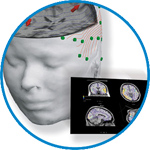- Home
- About ANT
-
Products

asa
asa is a highly flexible EEG/ERP and MEG analysis package with a variety of source reconstruction, signal analysis and MRI processing features.
.jpg)
eego mylab
The new frontier in multimodal brain research. With up to 16 kHz sampling rate, 256 EEG channels and unique software features, eego mylab gives you an unprecedented in-depth understanding of the human brain.

eego sports
eego sports offers complete freedom to collect high-density EEG data, bipolar EMG signals, and a variety of physiological sensor data, wherever and whenever required, with publish quality data in less than 15 minutes!

waveguard net
The waveguard net sets a new standard for research applications requiring high-density EEG data acquisition with quick preparation time, high flexibility, and subject comfort.

visor2
Our new and upgraded visor2 solutions integrate all the latest technologies for navigated rTMS, dual-coil navigation support, EEG-TMS recordings and pre-surgical evaluation for the highest quality in research and clinical procedures.

powerMAG ANT
The PowerMAG ANT 100 rTMS stimulator is designed for the specific needs of high-end TMS applications. Powerful high-frequency TMS as well as high precise single pulse and repetitive pulse protocols are combined in one single device.

xensor
xensor offers the solution for digitization of 3D electrode positions. xensor takes care of the whole procedure; it records, visualizes and stores positions acquired with a dedicated digitizer.

waveguard original
waveguard original is the cap solution for EEG measurements compatible with fMRI, MEG and TMS system. Use of active shielding guarantees performance in even the most demanding environments.

waveguard connect
waveguard connect EEG caps are a perfect match for hospitals and institutes aiming at reliable EEG, maximum uptime and great patient comfort! For optimal signal quality, the electrodes are made of pure, solid tin.

waveguard touch
waveguard touch is a dry electrode EEG cap. The unique Ag/AgCl coated soft polymer electrodes provide stable, research-grade EEG signals while maintaining subject comfort. The combination of these innovative dry electrodes and the industry-leading waveguard cap makes waveguard touch the best solution for dry EEG.

smartmove
smartmove allows planning of a complete TMS session ahead by defining stimulation sites based on anatomical MRI information and functional information like fMRI, PET or EEG/MEG.
Stay - References
- Support
- Events
- News
- Contact Us
You are here
Greater sensitivity of the P300 component to bimodal stimulation in an event-related potentials oddball task
Greater sensitivity of the P300 component to bimodal stimulation in an event-related potentials oddball task
OBJECTIVE: Studies that explore neurophysiological correlates of psychiatric disorders have commonly used event-related potentials during a visual or an auditory oddball task with the main results being changes in the P300 component. In the present study, a bimodal oddball design with synchronized pairs of audio-visual stimuli was used to further improve the clinical sensitivity of the P300. METHODS: Two groups of healthy participants, one consisting of students displaying anxious-depressive tendencies and the other of control students, completed visual, auditory and two kinds of audio-visual oddball task (one using emotional stimuli and the other using geometrical figures and simple sounds), in which they had to detect deviant rare stimuli among more frequently presented standard stimuli as quickly as possible. Behavioral performance and P300 data were analyzed. RESULTS: The subjects with anxious and depressive tendencies had lower P300 amplitudes than controls, but only in the bimodal tasks. CONCLUSIONS: Although the two groups differed in their levels of anxiety and depression, only the bimodal tasks were able to identify these differences. SIGNIFICANCES: These results suggest that a bimodal oddball design should be used in future studies to increase the sensitivity of P300 differences for differentiating between healthy participants and those with clinical symptoms.

 Read more
Read more.jpg)




